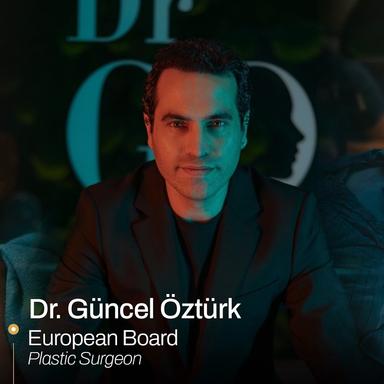Bald Crown: Understanding Causes, Treatment, and Options

Prathyusha Itikarlapalli
- Content Writer

Guncel Ozturk, MD, FEBOPRAS
- Reviewed by

Key Takeaways
- Hair fall occurs for various reasons, such as stress, pulling force (caused by excessive styling), medications, and a family history of baldness. Bald crowns cannot be confused with cowlicks. Hair transplant specialists examine patients and conduct various tests to categorize pattern baldness using the Norwood-Hamilton and Ludwig scales.
- The Norwood scale defines the stages of male pattern hair loss, and the Ludwig scale defines the stages of female pattern hair loss. Early intervention offers better, longer-lasting results for hair loss. Hair-thinning areas appear as parted or sparse hair follicles with weaker and fragile strands.
- Oral medicine and topical applications can treat and prevent a bald spot getting bigger. Hair transplant procedures and non-surgical methods like low-level lasers, PRP, exosomes, and stem cell therapy are also effective in treating bald crowns.
According to the Hair Society Statistics, hair loss strikes nearly 35 million men and 21 million women. The hair loss rate is 40% by the age of 35 and proceeds to nearly 70% by age 80.[1] The American Academy of Dermatology Association states that losing 50-100 hair strands a day is completely normal. The fallen hair regrows due to the hair follicle activity within the scalp. However, losing more than 50-100 hair strands in a day can be considered excessive hair loss.[2] This excessive loss of hair can occur due to various reasons.
Among all, male pattern baldness is most common, hitting young males. Typically, it starts with hair fall at the area of temples and proceeds as a receding hairline. This gradually proceeds to the hair thinning at crown male, finally leaving a horseshoe-shaped hair patch on the head. This process is gradual and results in a condition called androgenic alopecia (AA), bald spot head, or male pattern baldness.

Now, let’s understand the key reasons causing a bald crown.
Know the Bald Spot Reasons
Below are the factors contributing to balding on crown's head.
- Thinning crown due to genetic reasons: This proceeds with age and is seen in both men and women. It occurs due to an excessive response of hair follicles to the androgen hormones.[3] Hair thinning at crown female is equally predominant as it is in males but with slight variations in hair fall patterns.
- Bald spot from pulling hair: This condition, also called traction alopecia, results from tight hairstyles that cause excessive pull pressure on the hair strands. For example, high and tight ponytails or corn rows can cause it. In most cases, it's temporary while occasionally, it may cause permanent hair thinning when traction is associated with scarring.
- Crown thinning due to medications and hormonal imbalance: Internal and external body health conditions contribute to hair loss. Medication used for treating certain health conditions, like cancer, cardiac problems, or arthritis, causes excess hair loss. Hormonal changes during pregnancy, childbirth, and menopause are also contributory factors.
- Bald spot due to stress: Certain conditions of staying in emotional or physical shock for a brief period also contribute to hair thinning. This is temporary and can be reversed by providing enough nutrition, ditching off stress, and proper care.
The severity of crown thinning varies considerably depending on the intensity of hair loss. Some may only experience hair thinning or a receding part. However, a bald spot getting bigger is no less than being common among today’s generation. A bald crown is different from a cowlick. Below, we provide the details.
Bald Spot vs. Cowlick
A cowlick or a hair whorl is a natural hair pattern that lies at an opposite or different angle from the rest of the hair. Genes are the reason behind a cowlick pattern on the crown. A bald crown cannot be confused with a cowlick mainly because of the noticeable pattern. A bald crown typically appears like an empty spot at the top of the head surrounded by a hair strip. It should be fixed by understanding the causative factor and the right treatment. On the other hand, a cowlick is marked by a whorl of hair running opposite to the other hair strands. It doesn’t need the intervention of a healthcare provider. A hairstylist can fix it!

Understanding Pattern Alopecia
Humans have around 5 million hair follicles during birth. No follicles are added by the human body naturally after birth.[4] The hair follicles typically follow four stages of the lifecycle:[5]
- Anagen: It lasts for 2-7 years and is an active growth stage.
- Catagen: The hair shaft moves up from the skin surface, and this stage lasts for two weeks.
- Telogen: In this resting phase, hair follicle remains dormant and can last for a few months.
- Exogen: It's the end stage of a follicle and is marked by the shedding of the hair shaft.
Several research studies indicate the increased availability of scalp androgenic receptors in conditions of pattern baldness. Besides, enhanced dihydrotestosterone (DHT) production and 5-alpha reductase enzymes were also noted in androgenic alopecia candidates. DHT, a sex hormone with androgenic properties, is generated from another sex hormone, testosterone. This DHT binds to androgenic receptors in the scalp and causes hair loss by excessively stimulating hair follicles. This results in a shortened growth period or anagen, causing hair follicle thinning and shortening. Further, it also causes delays in replacing new strands due to follicular miniaturization. This finally results in shorter and thinner terminal hair production rather than the natural long, thick hair strands.
Source: NCBI[6]
A receding frontal hairline can be a concern. Are you worried that your hair loss might be due to pattern alopecia? Sign up with Envoy Health to connect with trusted hair restoration specialists who can assess your condition and guide you toward the right treatment plan, before the thinning becomes permanent
A Brief on Crown Balding Stages
DHT's action on androgenic receptors indeed occurs at the microscopic scale. Shorter and thinner hair strands manifest their visible symptoms. In men, it’s associated with temporal thinning in the frontal scalp on both sides, followed by vertex involvement. However, in women it's slightly different. The hair thinning is more diffuse, with a concentrated bald spot in head and a thin, preserved front hairline.
Healthcare providers perform a physical examination to understand the hair loss pattern. They categorize patient's crown balding stages according to the Norwood-Hamilton scale (men) and Ludwig scale (women). Typically, hair loss begins at puberty and shows progression with age. Both Ludwig and Norwood scales consider a gradual progression of hair loss stages.
Norwood Scale for Bald Crown Male:
- Stage 1: No hairline recession with little or scarce hair loss
- Stage 2: Slight hair loss near temples between ears and forehead
- Stage 3: Deep recession in the temporal hairline
- Stage 4: Deep hairline recession and hair loss on the crown
- Stage 5: Receded hairline connects with the bald spot in head
- Stage 6: Hair loss in the area between temples and bald crown
- Stage 7: Large bald spot back of head with a thin band of hair at the back sides.
Ludwig Scale for Baldspot Womans Head:
- Stage 1: Thinning hair visible along the part, with no effect on the back or sides of the head
- Stage 2: Decreased hair density with widened part and thin hair spread across the top of the head
- Stage 3: Severe condition of stages 1 and 2 with a completely bald crown.
Source: NCBI[7]
Healthcare providers consider multiple factors in the treatment of bald crowns. Bald crown regrowth is possible with effective diagnosis and finding the root cause. The doctors will perform a clinical evaluation and understand the family history of baldness. After ruling out dermatological issues like scalp infection, they order certain tests. It includes thyroid function tests, identifying iron deficiency, complete blood count, and serum ferritin levels. They also consider the psychiatric findings of depression and anxiety for a comprehensive understanding. Now, let’s learn better ways to spot crown balding.
How to Spot Crown Balding?
Identifying hair loss patterns early can help you implement early intervention measures. Note that early intervention offers better results than waiting until you reach the advanced stages. Get an expert checkup if your receding frontal hairline is an early sign of progressing baldness. However, before that, check out a few signs at home. Here are a few signs to look for in a bald crown.
- Visual inspection: You can do this with your wall-mounted mirror by holding a handheld mirror in one hand and inspecting your scalp for noticeable hair-loss patterns. Either you notice areas with less dense hair or a widening gap between the strands when the hair is parted.
- Compare photos: Comparing photos taken at different times will reveal significant changes. Look for visual signs of increased sparseness, and or a new circular bald or hair-thinning area developing, with a receding frontal hairline.
- Increased hair shedding: Increased hair loss is an early sign of baldness. You will notice more hair falling out and lying around your sleep pillows, your hairbrush, or in the shower. While losing 50-100 strands a day is normal, a balding crown experiences consistent, significant hair loss.
- Tactile examination: Running your fingers through your hair will help you detect less dense hair and areas with reduced resistance. You will feel weaker hair strands and increased space between the hair follicles.
Why is early intervention the key to hair loss treatment?
Crown balding often starts gradually, but early intervention is the key to effective treatment and better results. The more advanced the hair loss stage, the harder it is to deal with. You will be left with a few healthy hair follicles. Further, waiting too long until it reaches the advanced stage will leave you with inactive or dormant hair follicles. Acting early will not only preserve existing hair follicles but also allow you to choose less invasive, more affordable options. For instance, you can opt for simpler PRP or exosome therapies to treat early-stage crown balding. However, you will need hair transplant surgery if it's an advanced stage of balding.
Bald Crown Treatment
Indeed, a bald spot back of head doesn’t interfere with an individual’s overall health. However, a receding hairline and thin hair can significantly impact one’s confidence and self-esteem. Some consider a balding crown haircut, which is indeed a practical approach. Choosing a suitable hairstyle that offers comfort and confidence can be your solution. However, with advancing technology, newer approaches to fixing bald crowns are available. Many young men and women consider crown balding treatment rather than ruining their quality of life. Healthcare providers adopt the following approaches to bald crown treatment.
Bald Crown Hair Regrowth Products
Hair regrowth products include oral medications and topical applications. Topical applications include creams, shampoos, and lotions. The most popular and FDA-approved Minoxidil lotions promote hair regrowth within six months. This over-the-counter medicine, commonly called Rogaine, doesn’t need a prescription. While it cannot treat baldness, Minoxidil works well in the early stages of hair loss. Further, maintaining consistency and steadiness in usage is essential for better results. Finasteride, also called Propecia, is a prescription and FDA-approved hair loss treatment medicine for men. Finasteride stops the conversion of testosterone into DHT, thereby reducing hair follicular shrinkage.[8] Although it takes time, finasteride slows the hair fall process and stimulates the new hair regrowth. In addition, using hair supplements, including zinc, biotin, collagen, and azelaic acid, provides the required nutrients.

Bald Crown Hair Regrowth Procedures
Hair transplant procedures are the most popular treatment methods for bald crowns. Typically, the procedure aims to improve hair density and volume by transferring viable hair follicles from high-dense areas to thinned hair locations. Follicular unit transplantation (FUT), follicular unit extraction (FUE), direct hair transplantation (DHI), and sapphire FUE are various surgical methods of hair transplantation. The hair transplant specialists carefully pick up the healthy hair grafts from the donor area. They do this while maintaining their viability and implant them in recipient bald areas. The transplanted grafts adjust to the new conditions and continue to grow normally in the bald areas. While hair transplant methods offer guaranteed results, they are quite expensive compared to other approaches. You will notice visible hair regrowth within a few months following the hair transplant procedure. However, waiting at least 9-12 months will yield full results. Note that hair transplantation is not for baldness that has reached its advanced stage. You will need a sufficient number of healthy hair follicles for better results.

Further, other alternative non-surgical treatment approaches to treat bald spot growing include PRP, LLLT, exosome, and stem cell therapies. Platelet-rich plasma therapy is simple. The hair transplant specialists will inject your plasma to stimulate healing and hair growth. Low-level laser therapy (LLLT) stimulates hair regrowth by delivering photons to the scalp. Exosomes for hair loss is an advanced hair regrowth procedure. It relies on the exosomes delivering proteins, messenger RNA, and growth factors. They stimulate hair growth in the bald areas with relatively longer staying results compared to the PRP. Further, employing stem cells to stimulate hair regrowth has also gained popularity in recent years. The non-surgical alternatives are best to regrow hair on crown female. Surgical methods require shaving of hair, while non-surgical alternatives are simple.
Final Word!
Ignoring unusual hair shedding or a thinning crown could be the first sign of early baldness. Acting early makes all the difference. But only if you’re guided by the right experts and treatment plan. Every hair restoration option comes with its own pros and cons, and finding what works best for you starts with trusted guidance.
If you’re unsure which bald crown treatment suits you best, sign up with Envoy Health today. We connect you with verified clinics and specialists who offer advanced, affordable hair regrowth solutions, along with second opinions to help you feel confident in your decision. Take the first step toward restoring your hair and confidence. Sign up with Envoy Health today.
References
- Hair Loss Statistics
- Do you have hair loss or hair shedding?
- Androgenic Alopecia
- An Overview of Alopecias
- Physiology Hair
- Androgenic Alopecia
- Classifications of Patterned Hair Loss: A Review
- Efficacy And Safety Of Topical Finasteride Spray Solution For Male Androgenetic Alopecia: A Phase III, Randomized, Controlled Clinical Trial
Disclaimer
The information in this article is for educational purposes only and does not replace medical advice. Always consult your doctor before starting any treatments.
Hair loss on the crown is considered as pattern baldness. It is primarily due to stress, hormonal imbalances, genetic conditions, and medications.
Balding can occur for various reasons at different places on the head. Typically, male pattern baldness is characterized by a crown area and receding hairline. While balding at other scalp areas is also possible, it is an indication of problems like alopecia areata, where balding happens as spots are dispersed on the head. Conversely, balding in the crown region is an indication of pattern baldness.
Bald spots can grow back depending on the hair fall stage and treatment method. Early stages of balding can be reversed with topical and surgical approaches. Acting in the right way can reverse the hair fall pattern in bald crown candidates.
Crown balding is due to pattern baldness in males and females. It is evidently visible in men and is characterized by a receding hairline in the temples and a thinned crown left with a thin hair strip behind the head. It is primarily due to genetic reasons, hormonal imbalances, stress, and tractional pressure.
Balding crowns can grow back when you approach a skilled and experienced hair specialist. They will understand your hair loss pattern and the scalp condition. Depending on the observations, the healthcare providers propose topical and oral medications. Other approaches, like surgical and non-surgical treatments, are available to achieve hair regrowth on balding crowns.
Shaving the head is not mandatory in cases of crown balding. Getting the best haircut for bald crown is also effective in reclaiming lost confidence. One can adopt a hairstyle that fits the lifestyle while offering comfort and self-confidence. If shaving can gain confidence, this approach can be chosen.
A thin line of the scalp appears on the crown, which is completely normal. A widening part with a visible scalp line is a sign of hair fall. It appears as thinned hair along the part in women and receded hairline and balded crown in men.
So, we partner with the premier healthcare facilities!
Send me the list

